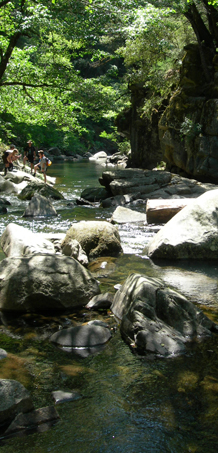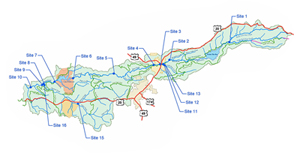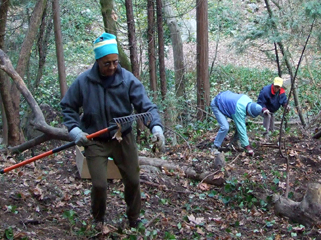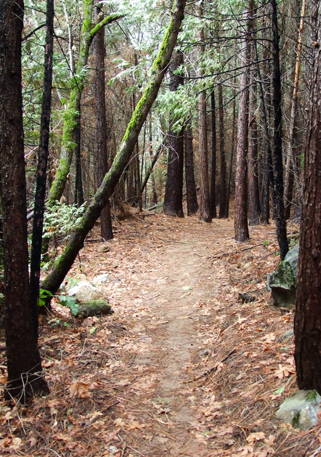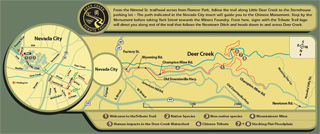Deer Creek begins as a trickle in the Sierra Nevada foothills, high above Scotts Flat Reservoir at 4000' elevation. A ribbon of nature, it winds its way through pine forests and alpine meadows, forging canyons and shaping the landscape on its journey downhill. As it rushes through downtown Nevada City, it hosts spawning rainbow and brown trout. Downstream, little known but beautiful, Deer Creek Falls hurries the water towards Lake Wildwood, where residents enjoy swimming and boating. Below the lake, pine forest gives way to willow and oak, and the creek teems with beaver, river otter, eagles, and great blue herons. At 600' elevation and 34 miles from its source, Deer Creek joins the Yuba River, where it greets the native salmon spawn each fall.
Deer Creek has been impacted by human use and abuse since the days of the Gold Rush. Prospectors turned over every section of the river, diverted its waters, logged its forests, and filled it with gravel and toxic mercury in their quest for riches. This legacy is still with us. Abandoned mines and mercury hotspots haunt the creek, and the native vegetation has been crowded out by invasive non-natives that create tinder-dry conditions in our hot summers. Over the past 150 years, trails to the creek have become overgrown, fish habitat has disappeared, and the remaining fish are tainted with mercury. And now, with the gold mining long ended, the creek faces new threats as our community experiences rapid growth. Land development, sewage disposal, agriculture, even car maintenance all require special care if we are to avoid further harm to the life of the creek.

Location of the Deer Creek Watershed.
- Detailed information about the Deer Creek watershed, its human impacts, and its management and restoration challenges can be found in the documents listed below.
- Deer Creek Watershed Restoration Plan, published March 2011 (26 MB).
- Final Draft: Upper Deer Creek Assessment and Resoration Plan, published March 2006 (66 MB).
- Management Plan: Deer Creek Coordinated Resource Management Plan, Executive Summary, published March 2004 (20 MB).
- Management Plan: Deer Creek Coordinated Resource Management Plan, complete report with appendices, published March 2004 (61.3 MB).


